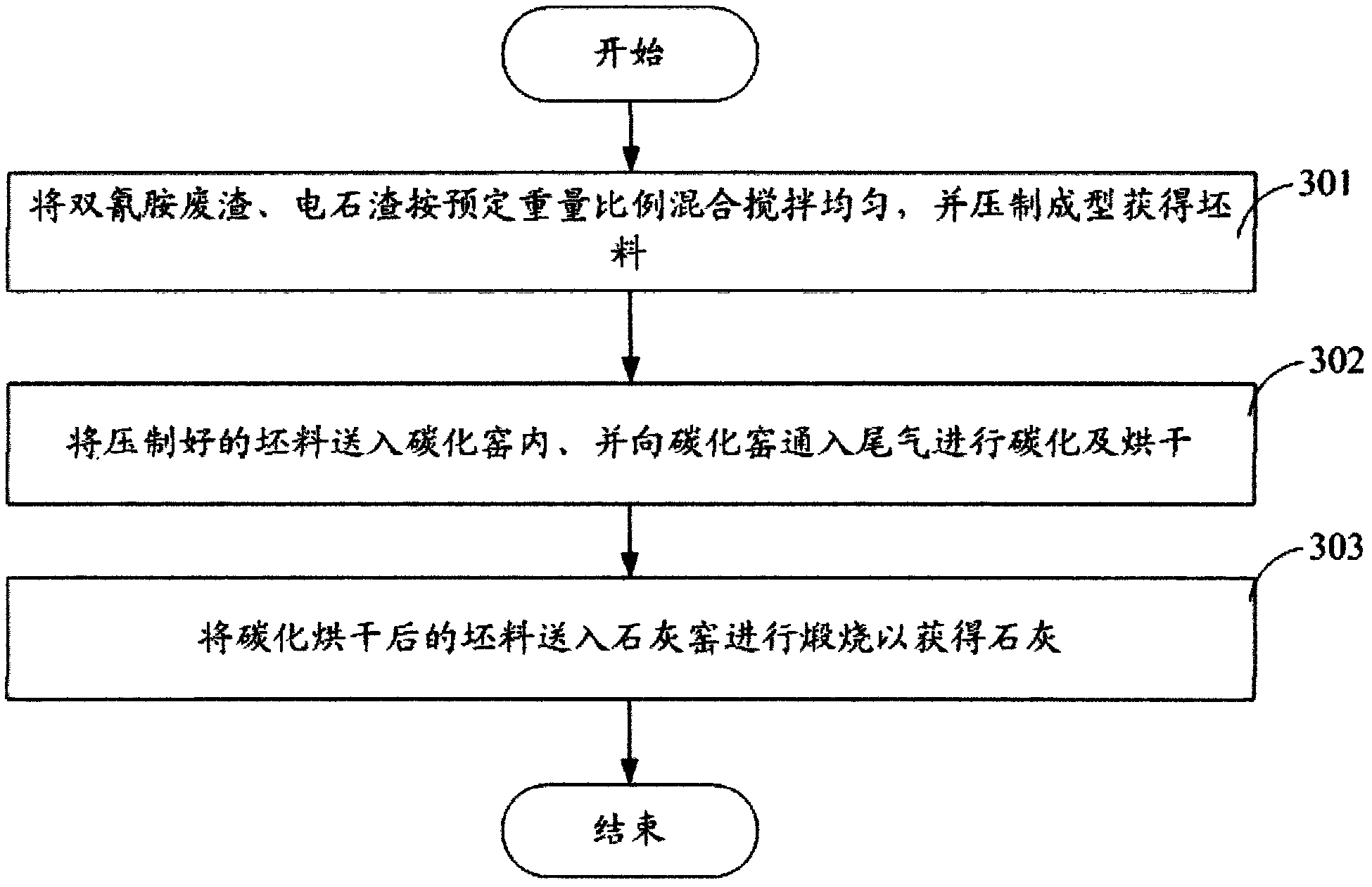Method of utilizing dicyandiamide waste residues and carbide slag to produce lime
A technology of dicyandiamide waste slag and carbide slag, which is applied in the field of lime production and can solve the problems of reduced lime purity, reduced lime purity, and difficulty in molding
- Summary
- Abstract
- Description
- Claims
- Application Information
AI Technical Summary
Problems solved by technology
Method used
Image
Examples
Embodiment Construction
[0012] This embodiment adopts a kind of carbide slag with strong cohesiveness as the bonding material, wherein the carbide slag mainly contains 85% calcium hydroxide, and the calcium carbide slag and the loose and unbonded dicyandiamide are combined through a reasonable weight ratio. The waste slag is mixed, stirred and pressed to obtain a billet that is not easily broken. The formed billet is not easy to break, and the strength of the billet is further strengthened after carbonization and drying with tail gas during carbonization. The conditions for reacting with calcium carbonate, so calcium sulfate will not be generated in the billet, and further carbon dioxide gas in the tail gas and calcium hydroxide in calcium carbide slag will form calcium carbonate. In the calcination stage, the billet is not easy to break, thereby avoiding incomplete combustion of coal And ash is difficult to mix into the burnt lime.
[0013] Please see figure 1 , the flow chart of the method for uti...
PUM
 Login to View More
Login to View More Abstract
Description
Claims
Application Information
 Login to View More
Login to View More - R&D
- Intellectual Property
- Life Sciences
- Materials
- Tech Scout
- Unparalleled Data Quality
- Higher Quality Content
- 60% Fewer Hallucinations
Browse by: Latest US Patents, China's latest patents, Technical Efficacy Thesaurus, Application Domain, Technology Topic, Popular Technical Reports.
© 2025 PatSnap. All rights reserved.Legal|Privacy policy|Modern Slavery Act Transparency Statement|Sitemap|About US| Contact US: help@patsnap.com

